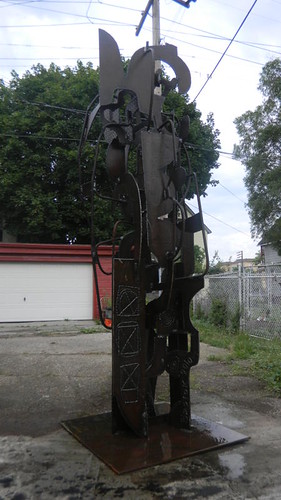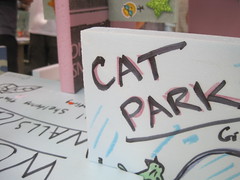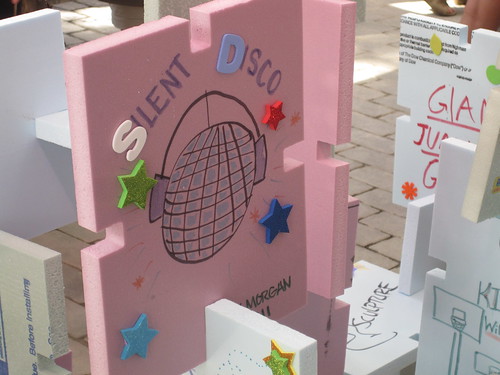What will happen to the BMW Guggenheim Lab once it packs up its video screens and moves on to Berlin? Members of First Street Green – the community group that for years lobbied the city to renovate the lot at Houston Street and Second Avenue – held a brainstorming event at the Lab on Saturday to answer just that. This much is certain: They’ve secured approval from the Parks Department, which owns the land, to install a new sculpture by Robert Sestok, a Detroit-based artist who has been visiting New York for three decades.
Mr. Sestok, who said he has been involved with Detroit’s influential Cass Corridor art movement since the 1970s, called “First St. Iron,” his welded steel sculpture, “a tribute to my past associations with the city of New York.” The piece was inspired by the wrought iron fences lining the streets near a friend’s house in the East Village.
Scott Pfaffman, a resident of the building next to the Lab, pitched the idea to install Mr. Sestok’s sculpture in 2010, before the renovation. But the project was shelved when the Guggenheim Lab brought bigger plans and deeper pockets to the empty lot.
“I was all for it,” Mr. Sestok said of the Lab, “because it was a neighborhood improvement, not just a cultural installation.”
A spokesperson for the Lab told The Local that the Guggenheim plans to vacate the space about a month after its programming ends on Oct. 16. So now it’s up to the park’s neighbors to determine what projects they’d like to see join Mr. Sestok’s sculpture. At Saturday’s event, participants scrawled their ideas on brightly-colored foam tiles and linked them together to build a three-dimensional “visioning wall” of their own.
The ideas ranged from predictable (a space for musicians and monthly artist residencies) to improbable: One nostalgic visitor scribbled the words “Mars Bar” on a tile, and another drew a picture of a lush cat park to rival the city’s dog parks. Neighbors will rate the proposals at a First Street block party on Sept. 24, and First Street Green will take the results to the Parks Department.
First Street Green member Jorge Prado told the assembled group he wanted the park to be a living, breathing conduit for creativity. “If it becomes a space with six things standing around, it’s going to become a black hole very quickly,” he said.
Mr. Prado and fellow First Street Green members Ann Shostrom and John Bowman admitted that it will be a challenge to find funding for the space. But they believe the strong Saturday turnout signals good things for the future.
Some participants in Saturday’s event lamented the sleek installation’s impending swan song. One visitor begged in writing, “Don’t remove the black steel frame in October – we’ll figure out how to use it.”
Lori Kent, an East Village resident who drew a picture of her pierogi-making Polish grandmother to lobby for multiethnic cooking classes in the park, told The Local, “I would love to see the structure stay. I think it’s going to cost a ton of money to ship it all over the world, so that’s not really great design thinking no matter how clever the design is.”
Even if she doesn’t get her wish, she said, the soon-to-be empty space will be a vast improvement over its grimy past. “It’ll look different, but it was formerly a rat hole, so it’s good.”







